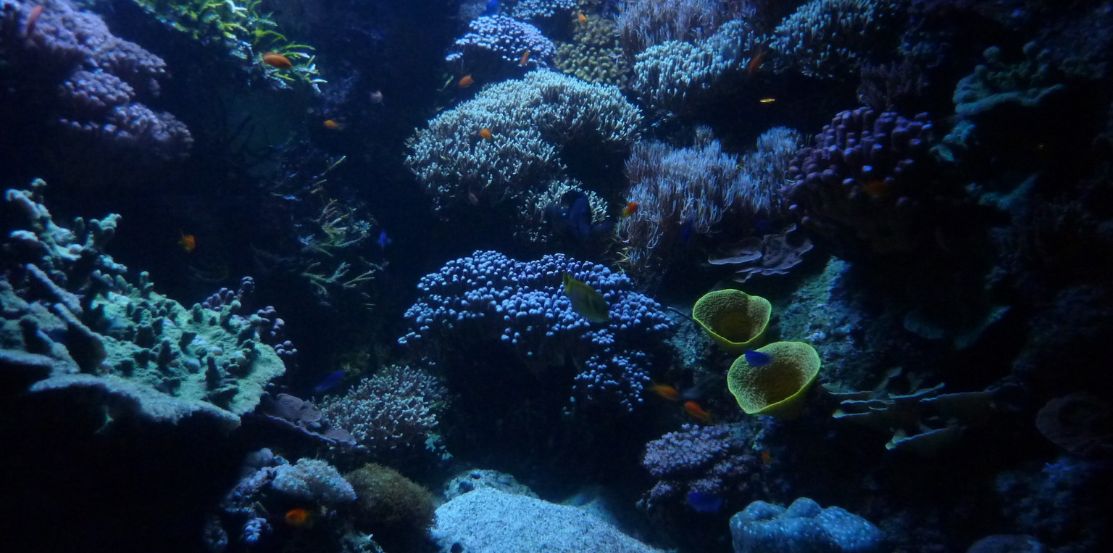The ocean: a critical resource for our planet
Link

Oceans are essential allies in the fight against climate change and in supporting the global food system. Gaining a deeper understanding of marine ecosystems is crucial for anticipating future challenges, while protecting them is vital to securing a livable planet for generations to come.
Covering nearly 75% of the Earth’s surface, the ocean is a vital resource. It contributes to climate regulation by absorbing 25% of carbon emissions and 95% of the heat generated by greenhouse gases, and it produces 50% of the oxygen generated by living organisms. Beyond its environmental functions, it harbors extraordinary biodiversity and supports the livelihoods of over three billion people who depend on marine and coastal ecosystems.
However, human activity increasingly threatens ocean health: plastic pollution, wastewater discharge, pesticide use, oil spills, overfishing, maritime traffic, and warming seas are all disrupting the ecosystem services provided by the ocean.
Preservation has thus become a major global issue, as recognized in Sustainable Development Goal 14, which aims to “conserve and sustainably use the oceans, seas and marine resources for sustainable development” by 2030. Although international momentum is building to meet these ambitions, significant challenges remain — namely, the complex interplay between national, regional, and international actions.
UNOC 3: a multistakeholder conference marked by optimism and collective action
The Third United Nations Ocean Conference (UNOC 3), held in Nice in June 2025, was a key moment to redefine priorities for implementing SDG 14.
Bringing together governments, scientists, NGOs, and financial actors, the conference emphasized the need for large-scale multistakeholder coalitions to address ocean preservation challenges. Discussions highlighted the importance of science-based decision-making and the promotion of a blue economy that prioritizes conservation, restoration, and the sustainable use of ocean resources. Achieving this vision requires a diverse mix of financing instruments and strong public sector leadership to reduce investment risks and attract private capital.
Priority sectors identified for action included maritime transport, fisheries, aquaculture, offshore renewable energy, and land-based activities with strong oceanic links. An estimated $8.5 trillion in assets across these sectors are at risk of value and revenue loss over the next 15 years.
In this context, calls to action included, among others: ratifying key agreements to combat illegal fishing, supporting carbon neutrality in maritime transport by 2050, and the “Nice Call” to eliminate plastic pollution by 2040.
Finally, on deep-sea mining, states reaffirmed the central role of the International Seabed Authority (ISA) in regulating mineral resource activities beyond national jurisdictions. The ISA is the only competent body in this area, recognized as the keeper of marine biodiversity and ecosystems in the deep sea, considered the common heritage of humankind
European marine policies
The EU’s Marine Strategy Framework Directive aims to protect marine ecosystems and biodiversity, aligning with SDG 14 and the Kunming-Montreal Global Biodiversity Framework (GBF). It requires member states to achieve and maintain Good Environmental Status (GES) of marine waters and supports the implementation of key EU environmental policies.
The directive applies to European marine waters beyond territorial seas, extending to the Exclusive Economic Zone (up to 200 nautical miles), including the seabed and subsoil. It complements other EU directives such as the Water Framework Directive, the Habitats and Birds Directives, the Common Fisheries Policy, and regional cooperation conventions.
Among the Key Multilateral Commitments from the Conference:
- Several countries ratified the BBNJ Treaty (Biodiversity Beyond National Jurisdiction), set to enter into force by January 2026 with over 60 signatories. It addresses marine genetic resource sharing, environmental impact assessments, and the creation of Marine Protected Areas (MPAs), contributing to GBF Target 3: protecting 30% of oceans by 2030. In this context, different countries announced the creation of new Marine Protected Areas (MPAs), including the first international deep-sea MPAs established jointly by Costa Rica, Ecuador, and Colombia.
- 37 countries have joined a moratorium on deep-sea mining, emphasizing the need for more scientific knowledge before exploitation.
- The European Union launched its first-ever Ocean Pact, pledging €1 billion to restore marine ecosystems, support coastal and island communities, and foster a sustainable blue economy.
LBP AM’s actions
As a responsible investor, LBP AM actively contributes to ocean protection through three key levers: risk analysis, engagement, and investment selection.
Analyze :
LBP AM integrates sustainable resource management—including water and pollution issues—into its proprietary ESG rating system, GREaT. It also developed a proprietary biodiversity score, known as BIRD, which evaluates companies’ transition pathways toward sustainable business models. This includes assessing water management practices and the pressure exerted on aquatic ecosystems through a biodiversity footprint metric.
Engage :
LBP AM conducts targeted thematic engagements with companies most exposed to ocean-related risks (e.g., aquaculture, water treatment, pesticide use, plastic production). It participates in international initiatives such as CERES, FAIRR, and ShareAction, and conducted 16 engagements on these themes in 2024.
Select :
LBP AM applies thematic exclusion policies for activities harmful to nature. Since 2024, it excludes companies generating over 20% of revenue from pesticide production or sales. In line with UNOC 3 commitments, LBP AM recently added deep-sea mining to its exclusion policy.
Finally, LBP AM identifies investment opportunities in innovative solutions with a positive impact on natural capital. These are included in the “solutions” pocket of its biodiversity-thematic funds, aiming to support companies driving long-term progress and resilience.

Simona RIZZUTO
Biodiversity SRI analyst